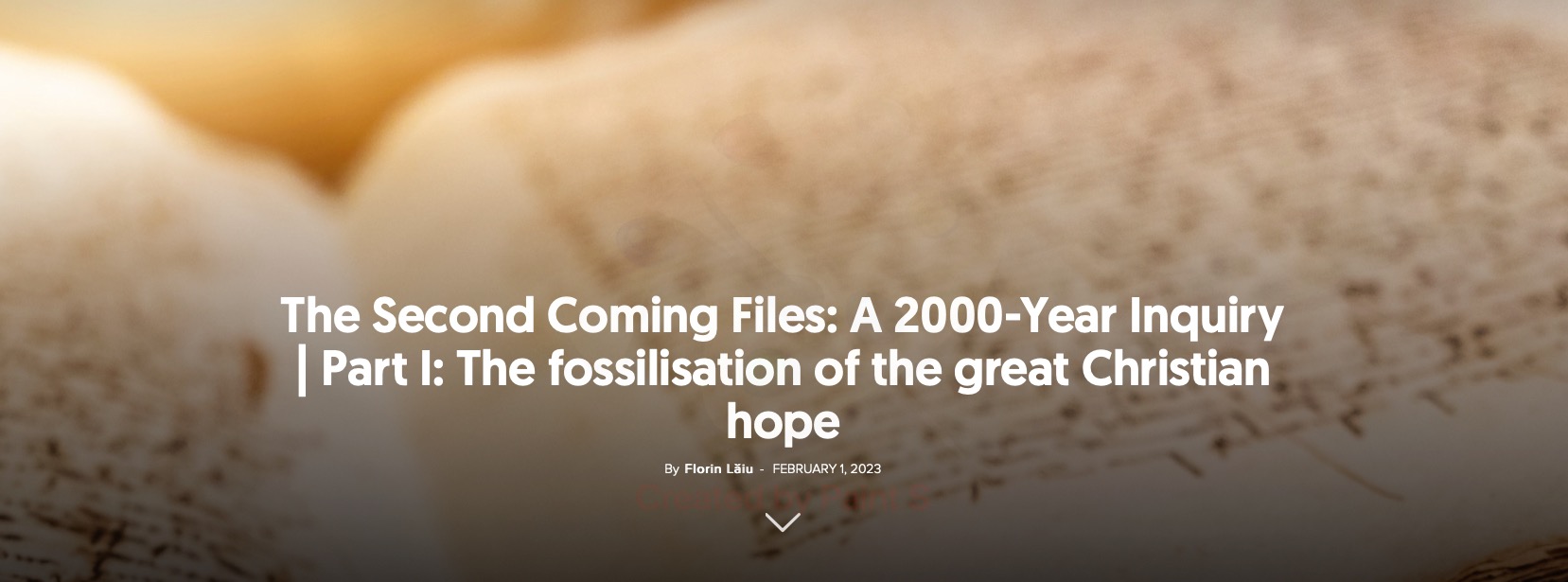Right from the first centuries, the scenario of the second coming of Jesus was interpreted spiritually-allegorically by some, and politically-ecclesiastically by others. As we have learned from the previous article of this series, even the main millenarian movement in antiquity (Montanism) led to an anti-apocalyptic reaction on the part of moderate Christianity. Is this rejection of apocalyptic millenarianism justified? What does Revelation actually predict?
After describing the second coming of Jesus as an incursion of heavenly forces against earthly rebels who would be completely annihilated (Revelation 19:11-21), the Revelation of John affirms, indeed, a reign of a thousand years ( the “millennium”) of Christ and His saints (Revelation 20:4). This millennial reign is seen as a prelude to the eternal kingdom of God and Christ (Revelation 11:15; 22:5) and as a necessary period until the complete annihilation of evil (Revelation 20:7-10, 14-15). The millennium of Revelation begins with the first resurrection, which is for eternal salvation, at the coming of Jesus (Revelation 20:6), and ends with the second resurrection, which is for punishment and eternal destruction (Revelation 20:5a).[1]
The millennial reign itself is not described in geographical terms. Only the judgement of the lost world and of angels is affirmed (Revelation 20:2, 12, 13; 1 Corinthians 6:2, 3). While the lost will be dead, the saved will have already been taken up to heaven at the second coming (John 14:1; 1 Thessalonians 4:17; 2 Peter 3:10-13; Revelation 19:21). The New Jerusalem will come down only at the end of the millennium on earth, inaugurating the universal renewal of the world (Revelation 20:7-9; 21:1-3, 9, 10, etc.).
Nowhere in the Revelation does it say that the millennial kingdom of Christ with His saints will be terrestrial or geographical. However, the ancient Millenarians inherited from extra-biblical sources, especially Judeo-sectarian and rabbinic, the idea that a temporary reign of the Messiah will take place on earth, before the eternal kingdom of God. Most of the fathers and teachers of the church between the years 100 and 300, both from the East and the West, maintained this messianic millenarianism, often called chiliasm, illustrating it with commentaries from the Old Testament prophets. One of the most respected fathers of the church, Irenaeus of Lyon (†202), supported the idea of 6,000 years of history crowned with the seventh millennium, that of the Apocalypse.
Read part I here: The Second Coming Files: A 2000-Year Inquiry | Part I: The fossilisation of the great Christian hope
At first, the reaction against millenarianism was minor and came from the unorthodox theological environment, from the spiritualist teachers Marcion (†160) and Origen (†253), who influenced the historical and modern church. After the 300s, when Origenism became popular, the church strengthened its relationship with the empire. Therefore, the dominant tendency of the church was against millenarianism, which was still waiting for the true empire of Christ. Augustine (†430), who had a repulsion towards the material world and did not accept a physical kingdom of Christ on earth, set the tone for the Middle Ages by teaching that the apocalyptic millennium represents the spiritual reign of Christ on earth, through the imperial church. According to Augustine, Christ had come “in spirit” and the first resurrection of the dead symbolised the Christianisation of the world. This “non-millennial” position remained dominant in the historic churches.
The anti-millennialism reaction of the imperial church explains why the Revelation was at first officially rejected, at least in the East (363). After its allegorical interpretation was ensured, it was then gradually accepted as a canonical book in the West (382-419), while the East still remained reluctant. Although physically accepted into the biblical canon, the Revelation has remained until today the “Cinderella” of the Orthodox Scriptures. It is never read in church, it is not included in the official lectionary of the church, and theology gives it little interest.[2]
Herod and the Infant
The chronic anti-millennialism of the historic churches is illustrated very well by the conflict between Herod and the infants who were sacrificed. The king’s need to kill the newborns came from his instinct as a leader, which rejected the idea that a better kingdom than his could not be born; that the little King who had suddenly appeared, threatening his throne, could only have come from Beelzebub, and His star could only be a wandering one. His seekers were proof for him, as they were neither moderate rabbis nor good theologians, but some rusty Asian magicians, astrologers, and esoteric researchers.
The practical abandonment of the Apocalypse was not manifested only in the Greek Orient. The Latin West, although it accepted the Revelation sooner, found in it its own political agenda. With the modern era, the Reformation found the papal antichrist and the Turks (another antichrist!) in Revelation, but failed to focus on the Coming of Christ or to find the Eternal Gospel in Revelation (Revelation 14:6-7). Evangelical theological prejudices made Luther believe that the Revelation has a message that is too Judaic and places too much value on “acts.” At the same time, an important part of the radical wing of the Reformation became politicised in the name of the Revelation, giving rise to some fanatical, dangerous and bloody movements, which were annihilated, according to the principle of the Gospel: “for all who draw the sword will die by the sword.”
Protestantism, however, would suffer even deeper deformations. The Reformation was diverted by some back to Rome, by others in a humanistic, secularising direction that paralysed faith in the authority of the Scriptures and abandoned the hope of Parousia. That is why it was necessary to have a wave of interdenominational revivals in honour of the near return of Jesus.
Florin Lăiu is a former Bible professor at the Theological Seminary of the Adventus University in Romania where he worked for 28 years, specialising in biblical languages, biblical exegesis, apocalyptic and biblical translation. Now retired, he is an Adventist apologetic, poetry and music enthusiast, author of articles and books, husband, father of four, and grandfather of six.



















